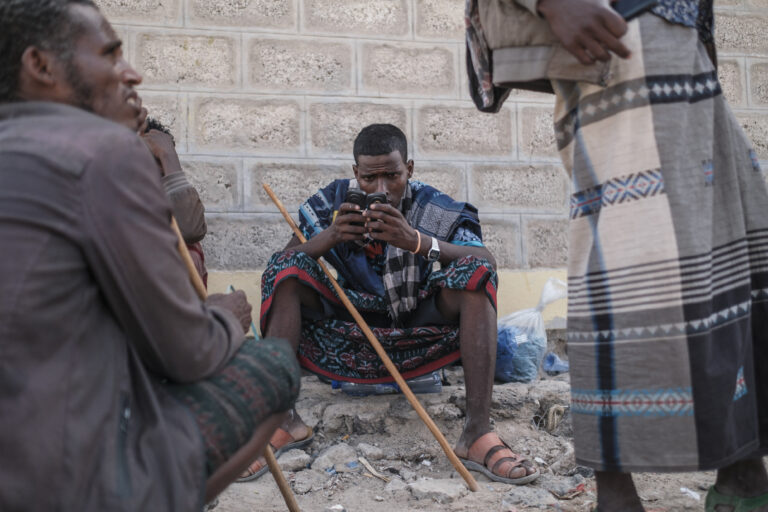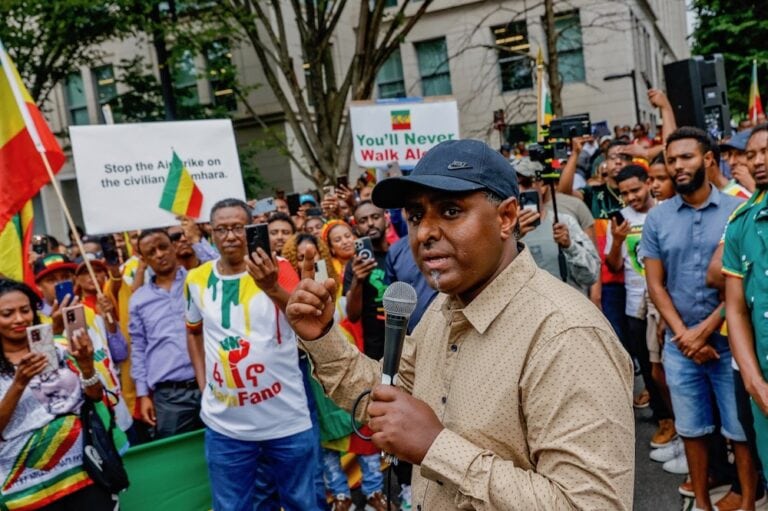(ARTICLE 19/IFEX) – The following is an ARTICLE 19 press release: The famine and censorship debate ARTICLE 19 publishes findings on 1999-2000 Ethiopian famine To mark the tenth anniversary of the coming to power of the ruling Ethiopian Peoples’ Revolutionary Democratic Front (EPRDF), ARTICLE 19 today publishes a report exploring what progress has been made […]
(ARTICLE 19/IFEX) – The following is an ARTICLE 19 press release:
The famine and censorship debate
ARTICLE 19 publishes findings on 1999-2000 Ethiopian famine
To mark the tenth anniversary of the coming to power of the ruling Ethiopian Peoples’ Revolutionary Democratic Front (EPRDF), ARTICLE 19 today publishes a report exploring what progress has been made towards eliminating the censorship dimensions of famine in Ethiopia over the past decade (1).
Andrew Puddephatt, Executive Director of ARTICLE 19, said:
“The apparent return of famine to Ethiopia in 1999-2000 suggests that, despite the progress that has been made since 1991 by the ruling EPRDF in strengthening freedom of expression, including access to information, much more remains to be done. If, as Nobel prize winning economist Amartya Sen argues, poverty and famine are forms of ‘unfreedom’, then it makes it literally a matter of life and death that those who govern Ethiopia push forward urgently with the process of deepening and consolidating respect for fundamental human rights and democratic principles.”
In assessing the role of the Ethiopian Government during the 1999-2000 famine, the report states that, although the EPRDF’s performance was much better than that of its Derg predecessor between 1982-5, the legacy of the past – for example, a deep-rooted culture of secrecy – remains difficult to overturn. Structures and processes of accountability, ‘voice’ and participation within the Ethiopian polity are still weak and underdeveloped.
Regarding the role of the international media, the report shows that its focus on the recent famine was once again predominantly ‘humanitarian’ in character. While this approach can promote action to address an emergency, it often downplays the ‘structural’, as opposed to the ‘natural causes’ of famine. ‘Structural causes’ must also be addressed if sustainable rural livelihoods are to be constructed over time.
Regarding the local media, the report argues that the Government’s programme of media liberalization remains limited, particularly in the sphere of broadcasting. The crucial ‘early warning’ role which the local media could play in safeguarding Ethiopia against a future of persistent famine is still far from entrenched.
Finally, the report describes how donor governments were again caught in a ‘humanitarian paradox’: between their concern to address ‘structural causes’, including the war between Ethiopia and Eritrea, and the reality that they could not afford to be seen as slow to react once the world knew that millions were threatened by famine.
ENDS
The report is on ARTICLE 19’s website at www.article19.org/docimages/1034.htm
1. In 1991, ARTICLE 19 published Starving in silence. A report on famine and censorship. In our new report, we use the term ‘famine’ because it provides a consistent point of reference with our 1991 report. Discussions continue about whether 1999-2000 was actually a famine or not. We are not seeking to have the final word on this question. More generally, there is a major ongoing academic and policy debate about how to define famine. We accept that the term is in many respects highly subjective and politicized.


